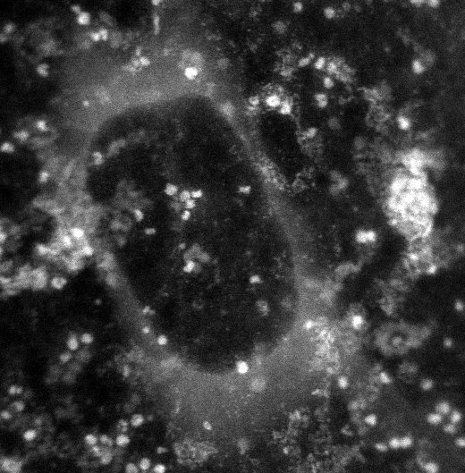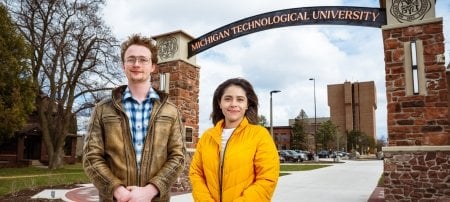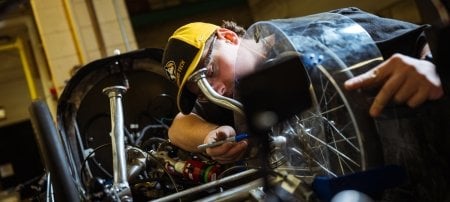Study of Key Biomolecule Earns Tolou Shokuhfar CAREER Award

Tolou Shokuhfar will be investigating the inner workings of a protein that plays a key role in human health with funding from a five-year, $400,000 Faculty Early Career Development (CAREER) Award.
Shokuhfar, an assistant professor of mechanical engineering-engineering mechanics at Michigan Technological University, will study the biomolecule ferritin, which stores iron in the body in a non-toxic, mineralized form and releases it safely. In humans, ferritin serves as a buffer between iron deficiency and iron overload, and when it malfunctions, it may be involved in a number of degenerative diseases, such as Alzheimer’s and Parkinson’s.
“If ferritin isn’t functioning well, free iron can float around in the body oxidizing tissues,” Shokuhfar said. That can cause disorders ranging from heart disease to cancer.
Shokuhfar will observe ferritin molecules using a revolutionary technique she developed with colleagues at the University of Illinois-Chicago. By encapsulating ferritin in a microscopic graphene bubble, they were able to observe the fully hydrated molecule using an electron microscope. Usually samples must be freeze-dried and sliced, because electron microscope samples are imaged in a vacuum, but this new technique allows scientists to capture images of biomolecules in their natural state.
“People have been studying ferritin for 80 to 100 years, but no one’s been able to observe its working mechanism at the atomistic level before,” Shokuhfar said. “Now we can.”
Shokuhfar will place dysfunctional and healthy ferritin in solution and view in real time what happens when iron ions are introduced to the mix. “Understanding the molecular basis of this disease can give us insights into the role of iron and help design therapeutic approaches,” she said. “I’m really looking forward to getting this project going, because I believe this research can have a big impact on human health.”
Michigan Technological University is a public research university founded in 1885 in Houghton, Michigan, and is home to more than 7,000 students from 55 countries around the world. Consistently ranked among the best universities in the country for return on investment, Michigan’s flagship technological university offers more than 120 undergraduate and graduate degree programs in science and technology, engineering, computing, forestry, business and economics, health professions, humanities, mathematics, social sciences, and the arts. The rural campus is situated just miles from Lake Superior in Michigan's Upper Peninsula, offering year-round opportunities for outdoor adventure.




Comments